Hey there, food enthusiasts! Are you tired of the disruptive noise that your blender makes every time you whip up a delicious smoothie or blend ingredients for your favorite recipes? Well, you’re in luck! In this blog, we’ll be diving into the secrets to silence and sharing some handy tips on how to reduce blender noise. Whether you’re an avid home cook or just someone looking for a more peaceful blending experience, this article has got you covered.
But why should you even bother reducing blender noise in the first place? Besides the obvious benefit of maintaining a calm and tranquil environment in your kitchen, there are plenty of reasons why keeping those decibels down is worth your while.
Before we jump into the deep, let’s have a short overview for people who want a quick and short answer on how to reduce blender noise:
9 Proven Ways to Reduce Blender Noise
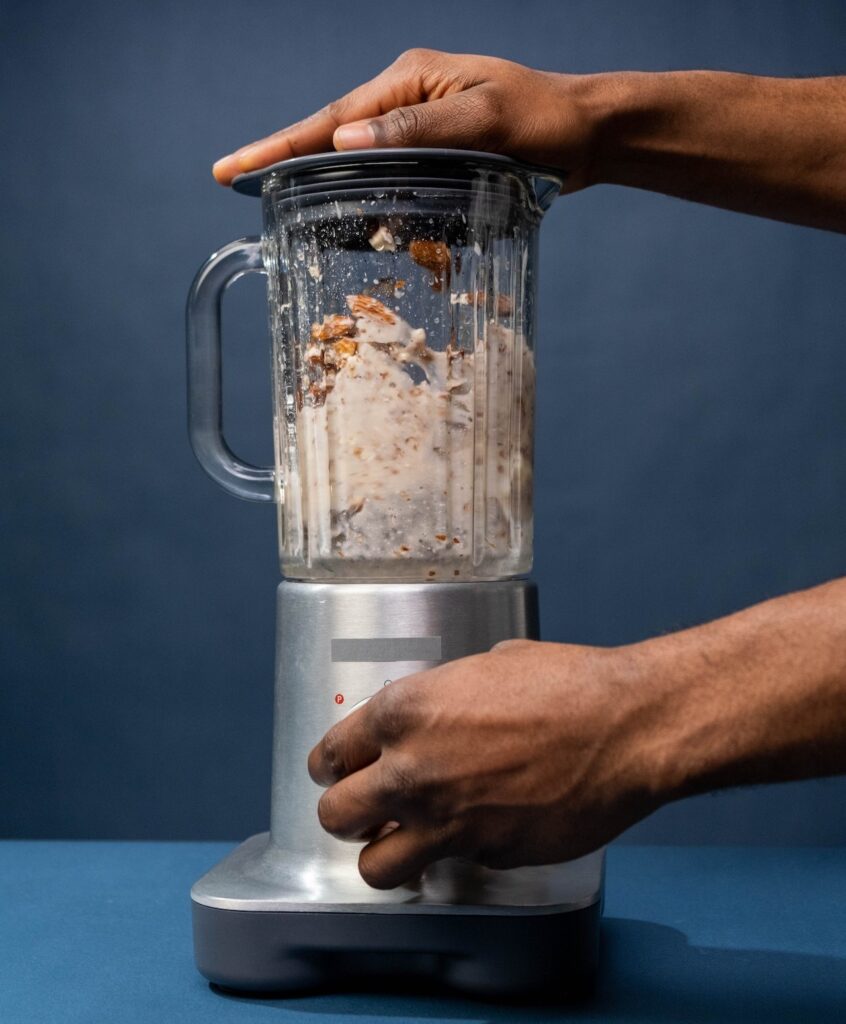
#1 Distance between your blender and the walls
When using a blender, it generates noise due to the rapid rotation of its blades and the vibrations produced by the motor. These vibrations can be transmitted to nearby surfaces, including walls, countertops, and cabinets, which can amplify the noise. By increasing the distance between your blender and these surfaces, you can help reduce the noise levels.
Here are two suggestions to consider when it comes to the distance between your blender and the walls:
- Place your blender in the center of the countertop: Positioning your blender away from the walls and closer to the center of your countertop can help prevent sound reflections and vibrations from transferring to nearby surfaces.
- Maintain a gap between the blender and the walls: Leave a reasonable gap between the back of the blender and the wall. This space will act as a buffer, preventing direct contact between the blender and the wall, which can reduce noise transmission.
Even though these two tips may not have a lot of scientific support, they are useful ways to reduce mixer noise by stopping movements from spreading to nearby surfaces. Trying out these ideas can make a noticeable difference in how much noise there is.
#2 Support underneath your blender
Using support underneath your blender can help reduce noise by dampening vibrations and preventing them from transferring to the countertop or surrounding surfaces. Here are some common materials that can be used as supports for your blender:
- Cloth: Placing a cloth or towel underneath your blender can act as a cushioning material, absorbing vibrations and reducing noise. Ensure that the cloth is thick enough to provide adequate support and minimize vibration transfer.
- Rubber mat: A rubber mat is a popular choice for reducing blender noise. Rubber has excellent vibration-dampening properties, and placing a rubber mat underneath your blender can help absorb vibrations and minimize noise transmission.
- Silicone mat: Similar to a rubber mat, a silicone mat can effectively dampen vibrations and reduce blender noise. Silicone is a flexible and resilient material that can absorb and dissipate vibrations, resulting in a quieter blending experience.
When using a cloth, rubber mat, or silicone mat as a support for your blender, make sure it is large enough to cover the area under the blender and provide a stable base. This will help prevent the blender from moving during operation, further reducing noise and ensuring safety.
#3 Cover blender with cloth/towel to reduce noise
Another simple way to reduce blender noise is to cover it with a cloth or towel. When you place a cloth or towel over your blender, it acts as a soft barrier that helps absorb some of the vibrations and noise produced during blending. This can help muffle the sound and create a quieter environment in your kitchen.
To use this method, simply take a clean cloth or towel and drape it over the blender while it is in use. Make sure that the cloth fully covers the top of the blender, including the lid, to effectively reduce noise. The cloth absorbs and dampens the vibrations, reducing the sound that is transmitted to the surrounding area.
While this technique may not completely eliminate blender noise, it can make a noticeable difference in reducing the overall volume. It’s a simple and cost-effective solution that can be easily implemented without requiring any specialized equipment or materials.
Give it a try and see if covering your blender with a cloth or towel helps create a quieter blending experience in your kitchen.
#4 Try sound enclosure to reduce blender noise
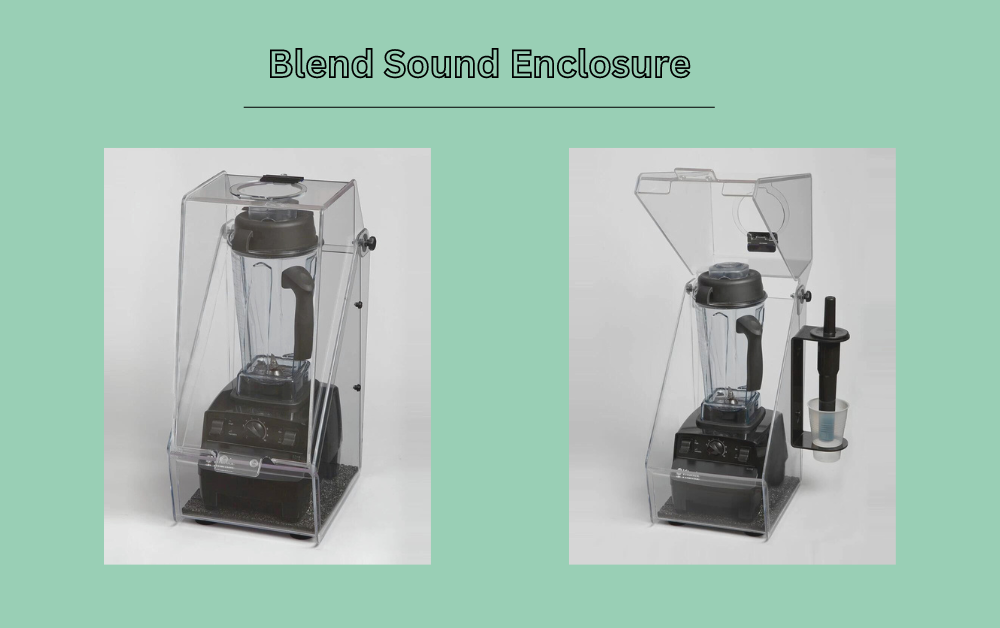
Using a sound enclosure can be an effective method to reduce blender noise. Here are two approaches you can consider:
- Look around for one: Some blenders come with optional sound enclosures that are specifically designed to reduce noise. If you already own a blender, check if a sound enclosure is available as an accessory or if the manufacturer offers one separately. You can explore the manufacturer’s website, contact customer support, or visit local appliance stores to inquire about the availability of sound enclosures for your specific blender model.
- Create a plastic sound enclosure: If your blender doesn’t have a dedicated sound enclosure, you can consider creating one yourself. WhisperBlend is a company that specializes in manufacturing custom plastic sound enclosures for blenders. You can visit their website or contact them to inquire about purchasing a sound enclosure tailored to fit your blender model. Their enclosures are designed to effectively reduce blender noise by trapping and dampening sound waves.
By using a sound enclosure, whether it’s an accessory provided by the manufacturer or a custom one from WhisperBlend, you can help contain and minimize the noise produced by your blender. The enclosure acts as a physical barrier that traps the sound waves, preventing them from spreading to the surrounding area and reducing noise transmission.
NOTE:
Remember to follow any instructions provided by the manufacturer or WhisperBlend when using a sound enclosure to ensure proper ventilation and safe operation of your blender.
#5 Create a soundproof environment
Blender noise is primarily caused by the high-speed rotation of the blender’s blades and the resulting vibrations transferred to the surrounding surfaces. Sound waves generated by the blender can bounce off walls, floors, and ceilings, amplifying the noise and making it more intrusive. By employing soundproofing techniques, we can mitigate these issues and enjoy a quieter blending experience.
Techniques for soundproofing environment:
- Location and Placement: Choose a suitable location for your blender, considering proximity to living areas and noise-sensitive spaces. Placing it on a stable surface, away from walls or corners, can help minimize noise transmission.
- Sound-Absorbing Materials: Utilize sound-absorbing materials to dampen blender noise. Consider applying acoustic foam for soundproofing mats on nearby walls, floors, and ceilings. These materials help absorb sound waves, reducing echo and noise reflection.
- Sealing and Weatherstripping: To minimize sound leakage, seal any gaps or openings in the enclosure using weatherstripping or acoustic sealants. Pay close attention to corners, seams, and joints, as these areas are common sources of sound leakage.
By implementing these soundproofing techniques, you can significantly reduce blender noise and create a more serene kitchen environment.
#6 Blending in a pantry area or away from people
Blending in a pantry area or away from people is a simple yet effective way to minimize blender noise. By placing your blender in a separate room or pantry, you can contain the noise within that space, reducing its impact on others in the vicinity. This is particularly useful if you live in an open-plan environment or have noise-sensitive individuals nearby.
#7 Buy a blender with less power
Blenders with higher power ratings tend to generate more noise due to their powerful motors. If reducing blender noise is a priority for you, consider purchasing a blender with less power. Opting for a model with a lower wattage or a blender specifically designed for quieter operation can significantly decrease noise levels while still providing adequate blending performance.
#8 Wear protection for your ears
When operating a noisy blender, wearing ear protection is an effective way to safeguard your hearing and minimize the impact of blender noise on your ears. Foam earplugs or earmuffs designed for noise reduction can provide sufficient protection. This is especially important if you use your blender frequently or for extended periods.
#9 Purchase a high-quality silent blender
If blender noise is a major concern, investing in a high-quality quite blender can be a worthwhile option. Silent blenders are specifically designed to operate with minimal noise output while still delivering excellent blending results. These blenders often utilize advanced motor technology, noise-dampening materials, and improved blade designs to reduce noise significantly.
By implementing these measures, you can enjoy the convenience of blending while minimizing disruptive noise for yourself and those around you.
Now let’s take a look at the health benefits of a quiet blender.
FURTHER READING: How To Sharpen Blender Blades?
Health Benefits of A Quieter Blender
Blenders are indispensable kitchen appliances that offer convenience and efficiency in food preparation. However, the noise generated by blenders can have various health implications, particularly for children. Understanding the impact of loud blender noise on child health is crucial in promoting a quieter blending environment. Let’s explore the health benefits of a quieter blender and its positive effects on children.
Reduced noise-induced stress
Loud blender noise can contribute to increased stress levels, especially in children. Prolonged exposure to high levels of noise can trigger physiological and psychological stress responses. These stress responses may lead to elevated heart rate, increased blood pressure, disrupted sleep patterns, and impaired cognitive function. By using a quieter blender, the noise-induced stress on children can be significantly reduced, promoting a healthier and more relaxed environment.
Improved concentration and learning
Excessive noise from blenders can disrupt concentration and learning abilities in children. Research indicates that prolonged exposure to high noise levels can negatively impact cognitive development, attention span, memory, and academic performance. A quieter blender allows children to focus better on tasks, concentrate on their studies, and absorb information without the interference of excessive noise distractions.
Protecting hearing health
Children have sensitive hearing systems that are still developing. Exposure to loud blender noise can damage their delicate auditory system, leading to permanent hearing loss or other hearing-related issues later in life. By using a quieter blender, parents can protect their children’s hearing health, preventing potential hearing damage and ensuring optimal auditory development.
Reduced sleep disturbances
Blender noise can disrupt children’s sleep patterns, resulting in inadequate rest and compromised overall health. Quality sleep is crucial for a child’s growth, development, and overall well-being. Loud blender noise during nap times or evening hours can disturb sleep cycles, leading to fatigue, irritability, and impaired cognitive function. Minimizing blender noise ensures a peaceful sleeping environment for children, promoting healthy sleep patterns and supporting their overall health.
Enhanced emotional well-being
A quieter blending experience contributes to a calmer and more pleasant atmosphere in the kitchen. Excessive noise from blenders can evoke irritability, frustration, and emotional distress in children, disrupting their emotional well-being. By using a quieter blender, parents can create a nurturing environment that promotes positive emotions, reduces stress, and fosters a harmonious atmosphere during meal preparation.
WRAP UP:
Opting for a quieter blender offers significant health benefits for children. By reducing noise-induced stress, improving concentration and learning abilities, protecting hearing health, minimizing sleep disturbances, and enhancing emotional well-being, a quieter blending experience positively impacts children’s overall health and well-being. Prioritizing a quieter environment while using blenders helps create a healthier and more nurturing space for children to thrive.
After discovering the numerous health advantages of using a more silent blender, you might be considering making the switch to a quieter blender. If your answer is yes, we have an outstanding suggestion for the most quiet blender available:
Best Quiet Blender: Beast Blender + Hydration System
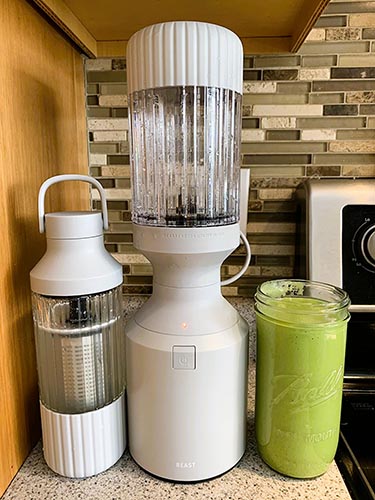
Recommended Read: Can You Put A Blender In The Dishwasher?
FAQs on How to Reduce Blender Noise
Why is blender so noisy?
Blenders are often noisy due to the powerful motors they possess. When the blender is turned on, the motor rotates the blades at high speeds to blend ingredients. This rapid rotation generates vibrations and turbulence, causing the blender to emit noise.
Does the power of the blender affect the noise level?
Yes, blenders with higher power ratings tend to generate more noise. Opting for a blender with less power can help reduce noise levels.
Can blender noise be harmful to my hearing?
Prolonged exposure to loud blender noise can potentially damage your hearing, especially if you are frequently exposed to it. Wearing ear protection, such as foam earplugs or earmuffs, can help safeguard your hearing.
Can I use sound-absorbing materials to reduce blender noise?
Yes, sound-absorbing materials like acoustic foam panels or soundproofing mats can help absorb sound waves and minimize noise propagation. These materials can be placed on the walls, floors, and ceilings surrounding the blender area.
Are there any health benefits to reducing blender noise?
Yes, reducing blender noise has health benefits, such as lowering stress levels, improving concentration and learning abilities, protecting hearing health, minimizing sleep disturbances, and enhancing emotional well-being.
Final Verdict
Finally, reducing blender noise not only makes for a more pleasant cooking experience but also has several health benefits. By following the tips we have provided, such as placing a rubber mat under the blender and using a soundproof cover, you can significantly minimize the noise produced by your blender. In addition to avoiding potential hearing damage and stress caused by loud noises, using a quiet blender can also promote healthier eating habits by making it easier to prepare meals without disturbing others. So why not give these methods a try and start enjoying the benefits of a quieter blending experience today? Your ears and your household members will thank you!


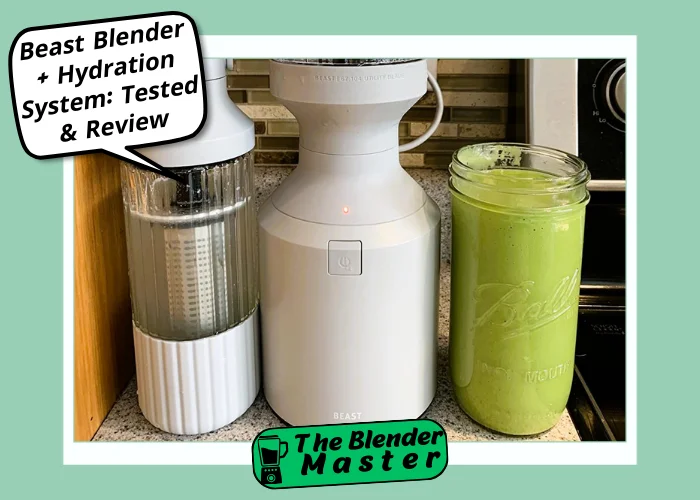
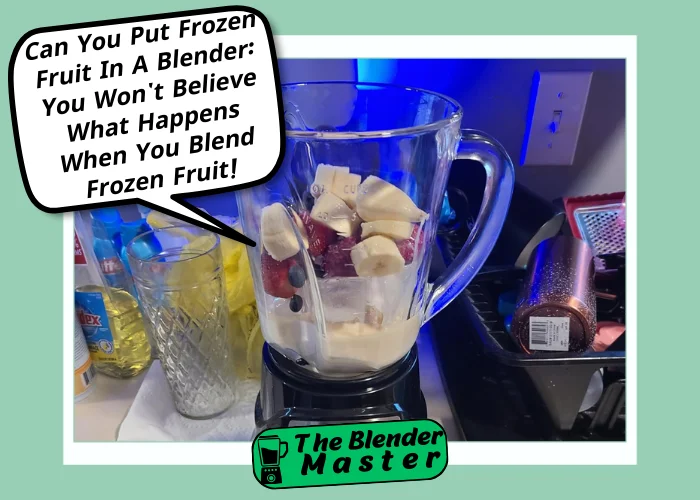
Leave a Reply